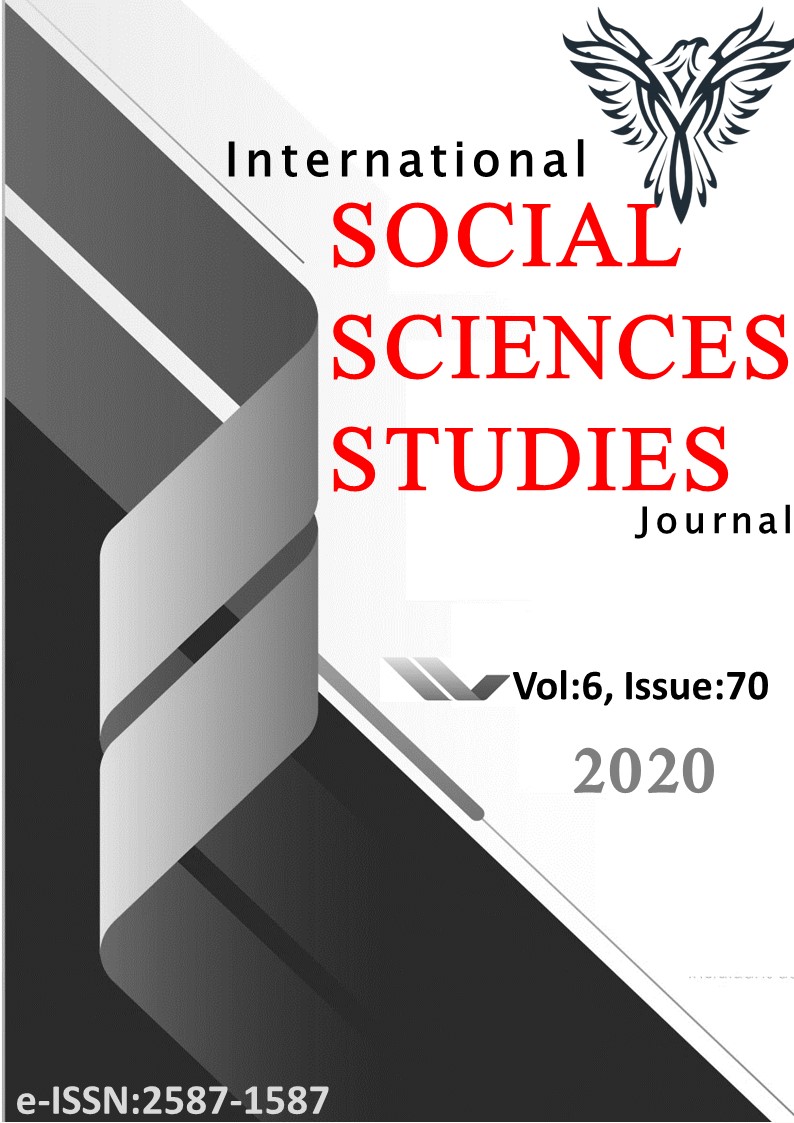RELATION BETWEEN PATERNALISTIC LEADERSHIP AND MOTIVATION LEVEL: AN APPLICATION IN A HEALTHCARE ORGANIZATION
Author :
Abstract
Babacan liderlik, daha çok batılı olmayan toplumlarda görülen, güçlü disiplin ve otoriteyi yardımsever bir biçimde birleştiren liderlik türü olarak tanımlanmaktadır. Motivasyon kavramı ise; örgütsel hedeflere ulaşabilmek için çalışanların çaba göstermesi ve işe devam etme gibi konulardaki istekliliği biçiminde ifade edilmektedir. Babacan liderlik ve motivasyon değişkenlerini ele alan bu çalışmada; ilk olarak sağlık çalışanlarının babacan liderlik ve motivasyon seviyeleri algıları ölçülmüş daha sonra çalışanlarda babacan liderlik algısı ile motivasyon seviyesi arasında anlamlı bir ilişki olup olmadığı incelenmiştir. Çalışanların babacan liderlik algılarını ölçmek amacıyla Pellegrini ve Scandura (2006)’nın geliştirdiği tek boyutlu ve 13 maddeden oluşan “Babacan Liderlik Ölçeği”, motivasyon seviyelerini ölçmek için Türker (2013) tarafından geliştirilen ve daha sonra Sayan (2018) tarafından geçerlilik ve güvenirlik analizleri yapılan, toplamda 3 boyut ve 20 maddeden oluşan “Motivasyon Seviyesi Ölçeği” kullanılmıştır. Bu çalışma, Ankara İlindeki bir Ağız ve Diş Sağlığı Merkezinde görev yapan 158 çalışan ile gerçekleştirilmiştir. Yapılan analizler sonucunda çalışanların babacan liderlik (3,89) ve motivasyon seviyelerinin (3,96) yüksek düzeyde oldukları tespit edilmiştir. Bununla birlikte çalışanlarda babacan liderlik algısı ile motivasyon seviyeleri arasında pozitif yönde ve yüksek düzeyde anlamlı ilişki (r= ,722; p< .01) tespit edilmiştir.
Keywords
Abstract
Paternalistic leadership is defined as the kind of leadership seen in mostly non-western societies, combining strong discipline and authority in a helpful manner. The concept of motivation is defined as the enthusiasm of employees to achieve organizational goals and to continue to work. In this study, which deals with paternalistic leadership and motivational variables, the perceptions of paternalistic leadership and motivation levels of healthcare employees were measured firstly, and then, it was investigated whether there were significant relations between the perception of paternalistic leadership in employees and the level of motivation. The “Paternalistic Leadership Scale”, which was developed by Pellegrini and Scandura (2006) to measure the paternalistic leadership perceptions of employees in the form of one single dimension and 13 items, and the “Motivation Level Scale”, which was developed by Türker (2013) whose validity and reliability analyses were conducted by Sayan (2018) containing 3 dimensions and 20 items in total was used to measure motivational levels. This study was conducted with 158 employees working at an Oral and Dental Health Center in the city of Ankara. It was determined as a result of the analyses that the employees had high paternalistic leadership perceptions (3.89) and motivation levels (3.96). Also, a positive, high and significant relation (r= .722; p< .01) was detected between the perception of paternalistic leadership and motivational levels in the employees.





